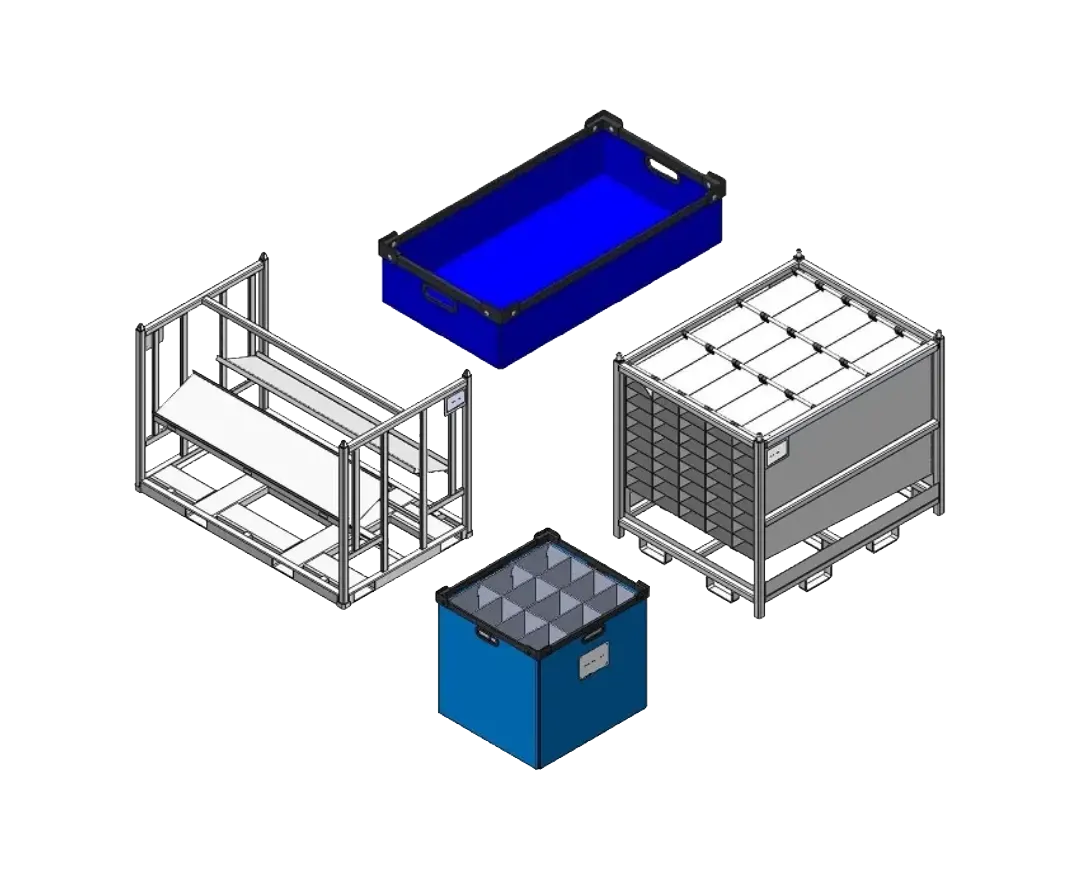Customizing Your Material Handling Containers
Customizing your material handling containers can greatly improve their efficiency and effectiveness in a variety of industrial and commercial settings. Tailoring these containers to your individual requirements provides for improved organization, productivity, and safety in your operations. Material handling containers can be tailored in size, shape, and capacity to exactly fit the products you need to store or transport. Businesses that invest in custom material handling containers can tailor their storage solutions to match operational demands and streamline workflows.
In addition to structural changes, equipping material handling containers with a variety of features will increase use and convenience. Ergonomic handles, casters for mobility, and stackable designs can help workers handle and transfer products more easily and safely. Furthermore, labeling systems or color-coding can help with easy identification and access, which improves inventory management. Customizing your material handling containers not only creates a more efficient storage system, but also improves the entire functioning and adaptability of your operations, resulting in a more organized and productive workplace.
The Importance of Material Handling Containers
Material handling containers are crucial in industrial and commercial operations because they provide a dependable and effective way to store, move, and organize a wide range of commodities and products. The value of material handling containers stems from their capacity to expedite operations, save labor, and increase overall productivity. These containers can resist the demands of industrial environments, ensuring quick access and safety for products. Businesses can use material handling containers to streamline workflows, reduce downtime, and improve supply chain efficiency.
Another important feature of material handling containers is their impact on workplace safety and organization. These containers lessen the risk of accidents and injuries by securely retaining large or dangerous items while preventing spills and contamination. Furthermore, their ability to stack and nest saves important floor space, resulting in a more organized and clutter-free workspace. In essence, the employment of material handling containers is critical for maintaining an efficient, safe, and orderly operation, which ultimately contributes to the company’s overall success and sustainability.
Benefits of Material Handling Bins
Material handling bins have multiple benefits, making them important in a variety of industrial and commercial situations. One of the most significant advantages of material handling bins is their capacity to promote workplace organization and productivity. The design purpose of these bins is to store and transport a wide range of items, from small parts and components to larger items. Businesses can use material handling bins to improve processes, eliminate clutter, and increase productivity by allowing staff to easily discover and collect the goods they require. Material handling bins are versatile and may be utilized in a variety of applications, making them an invaluable tool in any organization.
Material handling containers can provide substantial benefits in terms of worker safety and durability. These bins, made of durable materials like heavy-duty plastic or metal, are designed to endure the demands of industrial environments, providing long-term performance and reliability. Also, many bins include ergonomic handles and stackable designs, which improve usage and safety. Businesses that incorporate material handling bins into their operations can create a safer, more organized, and efficient workplace, resulting in better operational outcomes and cost savings.
The Adaptability and Resilience of Material Bins
Material bins are critical tools in a variety of industrial and commercial contexts, providing outstanding versatility and durability. These bins are designed to handle a wide range of materials, from small parts and components to larger, bulkier items, making them appropriate for a variety of applications. Their adaptability enables them to be easily integrated into a variety of systems, including shelving units, racks, and conveyor belts, thereby improving overall workflow efficiency. Material bins allow companies to maximize space usage, improve inventory management, and ensure that products are readily available when needed.
Another important element that makes material bins useful in industrial settings is their longevity. They can withstand heavy weights, rigorous handling, and exposure to hostile environments without losing structural integrity. This durability guarantees that material bins provide long-term performance, avoiding the need for regular replacement and maintenance. In addition, many material bins are constructed with reinforced corners, ergonomic handles, and stackable configurations to increase their longevity and functionality. Investing in long-lasting material bins not only saves money over time, but also helps organize your workplace and makes it more efficient.
Implementing Material Bins in Industrial Operations
Implementing material bins in industrial operations can improve efficiency, organization, and productivity. Businesses that integrate these materials bins into their operations can improve space utilization, ease inventory management, and eliminate downtime caused by looking for missing products. Material bins are available in a variety of sizes and configurations, allowing for customized storage solutions that match the unique requirements of every operation. This adaptability guarantees that resources are well-organized and easily accessible, resulting in smoother and more efficient procedure. By installing material bins, industrial operations can improve operational efficiency, safety, and productivity, eventually enabling long-term business success.
Key Considerations for Choosing Material Handling Bins
When choosing material handling bins for your industrial or commercial activities, several critical factors can help you make the optimal decision for your requirements. First and foremost, the durability and materials used in the bins are crucial. To endure the rigors of industrial environments, material handling bins must consist of strong materials like heavy-duty plastic or metal. Assessing the load capacity is critical to ensuring that the bins can manage the weight and type of products they will store and convey.
The size and arrangement of material handling containers are other crucial factors to consider. It is critical to evaluate the particular dimensions and forms required to fit your storage areas and supplies. Stackable bins are very useful since they maximize vertical space consumption and increase organizational efficiency. Customization options, including as dividers and labeling systems, can further adapt the bins to your operating needs, allowing for improved inventory control and faster access to stored items. By taking these aspects into account, you can choose material handling bins that not only fulfill your current demands but also contribute to operational efficiency and productivity.



















